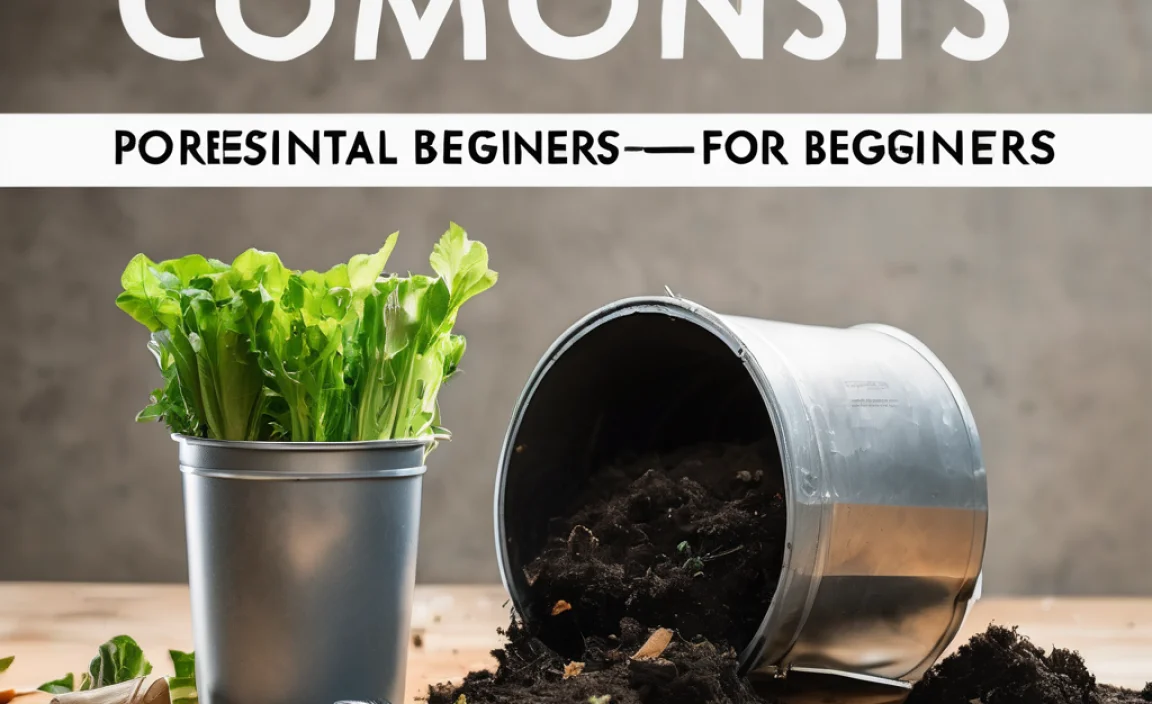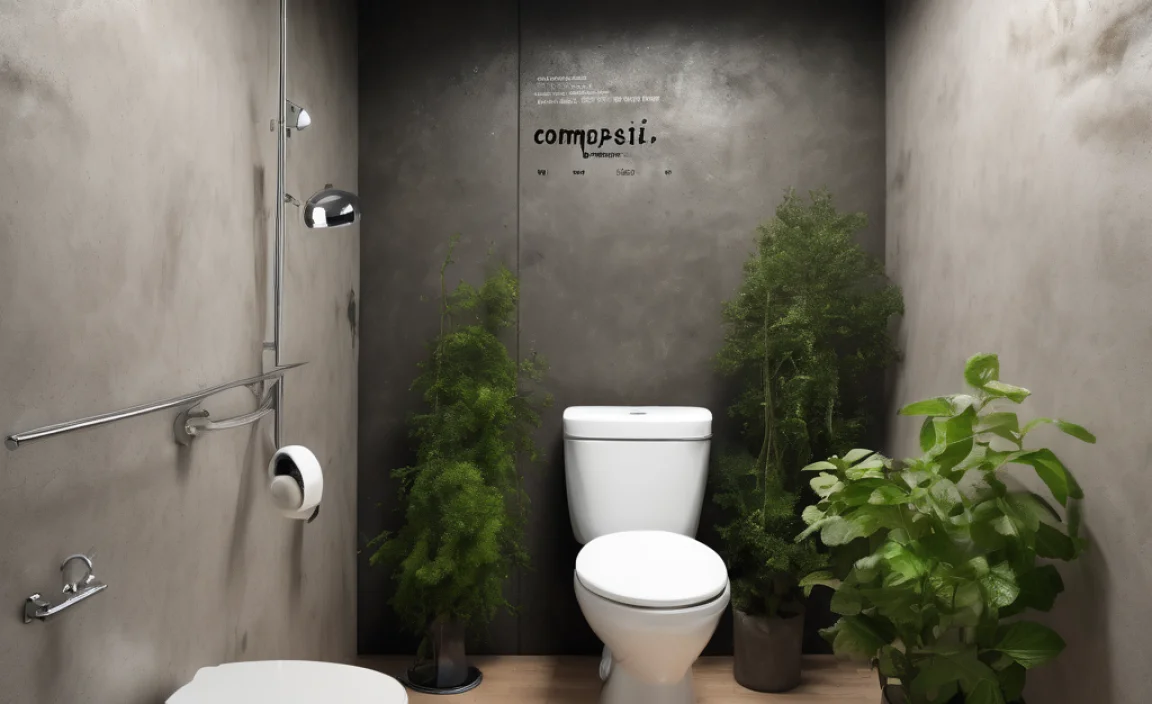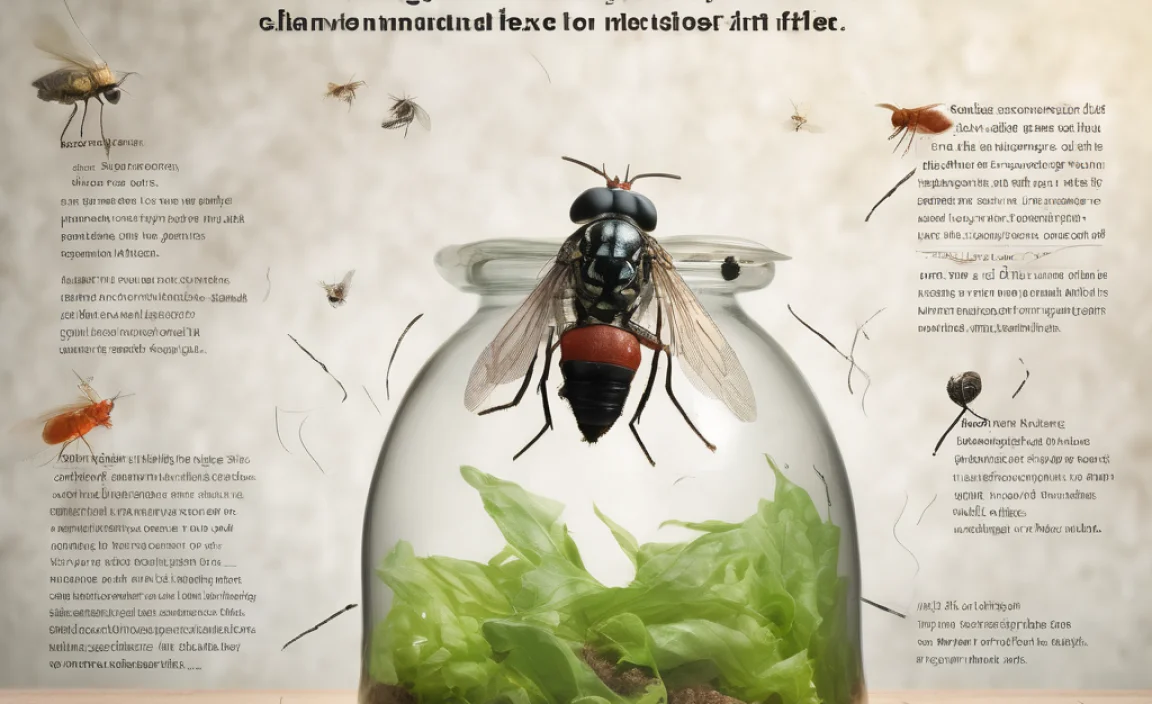Ever worried about pests like rats when thinking about composting for your office? It’s a real concern for many aiming to go green. But don’t let that thought stop you from trying a fantastic way to reduce waste! With a few smart tips and the right approach, you can compost at work without inviting unwanted guests. This guide will walk you through making composting safe and successful for your office, rodent worries and all.
Composting for Offices: Your Eco-Friendly Office Makeover
Going green in the office is more than just a trend; it’s a responsibility we all share. One of the most impactful ways to contribute is through composting. Yes, even in an office setting! Composting turns organic waste—like food scraps and paper towels—into nutrient-rich soil. This diverts a significant amount of waste from landfills, reduces greenhouse gas emissions, and can even provide material for office plants or local community gardens. It’s a win-win for the environment and your company’s sustainability goals.
However, the idea of composting can bring up questions, especially concerning pests. Rats are often a chief among these worries. This guide is here to demystify composting for offices and show you how to do it safely and effectively, keeping those pesky critters at bay. We’ll cover everything from choosing the right method to managing your compost bin.
Why Composting in Offices Matters
Offices generate a surprising amount of waste, much of which is organic. Think about it: coffee grounds, tea bags, fruit peels from snacks, uneaten lunches, used paper towels, and even some types of packaging. When this organic matter goes to a landfill, it decomposes without oxygen, producing methane, a potent greenhouse gas contributing to climate change. By composting, you’re actively:
- Reducing landfill waste.
- Lowering greenhouse gas emissions.
- Creating valuable soil amendment.
- Enhancing your company’s sustainability image.
- Potentially saving on waste disposal costs.
The environmental benefits are clear, and many companies are looking for practical ways to implement greener practices. Composting is a tangible and impactful step.
Understanding the Rat Concern in Office Composting
Let’s address the elephant—or rather, the rat—in the room. Rats are attracted to food sources and can pose a problem if compost bins aren’t managed correctly. They are opportunistic foragers, and an accessible, unscreened compost pile can look like a buffet. However, this doesn’t mean office composting is a bad idea. It simply means we need to be smart about how we compost.
The key is to make your compost bin inaccessible and unappealing to rats. This involves using the right type of bin, proper maintenance, and strategic placement. Most common office composting setups, especially indoor ones, can be designed to be rat-proof. Outdoor systems require more attention to physical barriers.
Choosing the Right Composting Method for Your Office
The best composting method for your office depends on your space, budget, and the amount of organic waste you generate. For an office setting, especially with rat concerns, indoor or contained systems are generally preferred.
1. Indoor Composting Bins (Worm Composting/Vermicomposting)
This is often the top choice for offices because it’s contained, odorless when managed correctly, and highly efficient at breaking down food scraps. It uses red wiggler worms to eat the organic material. Rats can’t access worm bins as they are sealed.
- How it works: Worms live in a bin with bedding material (like shredded newspaper). You feed them kitchen scraps, and they process it into rich worm castings.
- Pros: Odorless, produces high-quality compost (worm castings), compact size suitable for offices, completely inaccessible to rats.
- Cons: Requires a bit of learning about worm care, cannot handle large volumes of woody material.
- What to compost: Fruit and vegetable scraps, coffee grounds, tea bags, crushed eggshells, shredded paper.
- What NOT to compost: Meat, dairy, oily foods, citrus in large quantities, diseased plants.
2. Bokashi Composting
Bokashi is a fermentation process rather than traditional composting. It uses a special Bokashi bran sprinkled onto food scraps in an airtight container. While it doesn’t produce ready-to-use compost directly, it ‘pickles’ the waste, making it easier to break down in a second stage, often in a traditional compost pile or even buried in soil.
- How it works: Food waste is layered with Bokashi bran in an airtight bucket. Beneficial microbes in the bran ferment the waste. A liquid ‘tea’ is drained off periodically.
- Pros: Can handle meat and dairy, ferments waste quickly, produces a nutrient-rich liquid fertilizer, airtight system discourages pests.
- Cons: The fermented waste needs a second stage to fully decompose (e.g., outdoor compost bin, buried), can have a slightly pickled smell.
- What to compost: All food scraps including meat, dairy, and oils.
- What NOT to compost: Large bones, liquids that aren’t from the Bokashi process.
3. Sealed Tumbler Composters (Outdoor)
If your office has outdoor space, a sealed tumbler composter is a good option. These are enclosed bins that you can rotate, which speeds up composting and keeps pests out.
- How it works: Organic materials are placed inside a sealed chamber that can be rotated. Tumbling aerates the compost and mixes the materials.
- Pros: Faster composting than static piles, keeps pests out due to enclosed design, easier to turn than a large pile.
- Cons: Requires outdoor space, can be expensive, may not fully break down all materials if not managed correctly.
- What to compost: Kitchen scraps, yard waste (leaves, grass clippings), coffee grounds, paper.
- What NOT to compost: Meat, dairy, oily foods, diseased plants, pet waste (unless specifically designed for it).
For most offices, especially those concerned about rats and space, worm composting or Bokashi are the most practical and foolproof methods.
Setting Up Your Office Compost System: A Step-by-Step Approach
Let’s focus on setting up an indoor worm composting system, as it’s generally the most rodent-proof and manageable for an office.
Step 1: Gather Your Supplies
You’ll need a few basics to get your worm farm up and running:
- A Worm Bin: You can buy a pre-made one or fashion one from opaque plastic storage bins.
The EPA offers great resources on composting basics. - Bedding Material: Shredded newspaper, cardboard, coconut coir, or peat moss. Make sure it’s not glossy or colored ink.
- Red Wiggler Worms: These are crucial! Regular earthworms won’t thrive indoors. You can order them online or from local garden suppliers.
- Food Scraps: Start collecting your office’s fruit and vegetable scraps, coffee grounds, and tea bags.
- A Small Kitchen Caddy: For collecting scraps at individual desks or the main kitchen.
Step 2: Prepare the Worm Bin
If you’re making your own bin, you’ll need two opaque plastic bins of the same size. Drill several small holes (about 1/8 inch) in the bottom of one bin. This will be your worm bin. Drill a few more holes near the top of the sides for ventilation. The second bin will be the base to catch any liquid (worm tea).
Fill the worm bin loosely with your bedding material. Moisten it until it’s like a wrung-out sponge – damp, but not dripping. Red wigglers need a moist environment.
Step 3: Introduce the Worms
Gently place your red wiggler worms into the prepared bedding. Let them settle in for a day or two before introducing food. They can be a bit shy at first!
Step 4: Start Feeding Your Worms
Begin by adding a small amount of prepared food scraps. Bury the scraps under the bedding. This helps prevent odors and discourages fruit flies. It’s best to chop larger scraps into smaller pieces to help them break down faster.
What to Feed Your Worms (The “Greens”):
- Fruit and vegetable scraps (non-citrus in large quantities)
- Coffee grounds and paper filters
- Tea bags (staples removed)
- Crushed eggshells
- Plain cooked pasta and rice (in moderation)
What to Avoid (The “Browns” are bedding, but these are things to keep out):
- Meat, fish, bones
- Dairy products (cheese, milk, yogurt)
- Oily or greasy foods
- Citrus peels in large amounts (can be too acidic)
- Dog or cat waste
- Diseased plants
- Glossy paper or plastic
Step 5: Maintain Your Worm Bin
Regularly add food scraps, burying them under the bedding. Burying helps keep pests away and prevents odors. You’ll notice the bedding level decreasing as the worms work. Add more bedding as needed.
Harvesting the worm castings (worm poop!) is usually done every 3-6 months. There are various methods, often involving moving the finished compost to one side and adding fresh bedding and food to the other. The worms will migrate to the fresh material, leaving the castings behind.
The liquid that collects in the bottom bin is called worm tea. It’s a potent liquid fertilizer. Dilute it with water (about 1 part tea to 10 parts water) and use it to water office plants.
Managing and Maintaining Your Office Compost for Rat Prevention
Even with the best bin choice, proper maintenance is critical for preventing any pest issues, including rats.
Location is Key
Indoor Systems (Worm/Bokashi): Place these in a low-traffic area, like a break room, a storage closet, or under a sink. Ensure they are not easily accessible to curious employees or pests. They should be kept clean and away from direct sunlight or extreme temperatures.
Outdoor Systems (Tumblers): Position these away from the building’s foundation and any areas where pests might naturally congregate. A well-draining spot is ideal. Ensure they are not placed near dumpsters or other potential attractants.
Sealing and Access Control
For indoor bins, ensure the lids fit snugly. For outdoor tumblers, always close and latch the doors completely after use. If you’re using a DIY bin, make sure there are no large gaps.
What Goes In Matters
Strictly adhere to the list of what can and cannot be composted. This is paramount. Avoid composting materials that are particularly attractive to pests, like meat and dairy, especially in less secure systems. Even in secure bins, it’s good practice.
Regular Maintenance and Harvesting
A well-maintained compost system is a healthy system.
- Turn regularly: For tumblers, ensure you rotate them every few days.
- Monitor moisture: Your compost should be damp, not waterlogged or bone dry.
- Harvest finished compost: Don’t let compost sit indefinitely. Harvesting finished material reduces the overall mass and potential attractants.
- Clean up spills: Immediately clean up any compost material that spills around the bin.
Odor Control
Odors can attract pests. If your worm bin smells unpleasant, it usually means it’s too wet, has too much nitrogen (food scraps), or not enough carbon (bedding). Add more dry bedding material (like shredded paper), and ensure good airflow. For Bokashi, a slightly fermented smell is normal, but it shouldn’t be foul.
What to Do If You See Pests
If you do spot signs of rodents or other pests:
- Immediate Action: Secure the compost bin immediately.
- Review Your Practices: Are you adding prohibited items? Is the bin sealed properly? Is it located in an appropriate spot?
- Clean Surrounding Area: Ensure no spilled compost or attractive food sources are nearby.
- Consider a More Secure System: If you’re using an open bin outdoors, upgrade to a fully sealed tumbler. If indoors, ensure your worm bin lid is secure and there are no entry points.
- Consult Professionals: For persistent issues, consider consulting with pest control professionals for advice on rodent-proofing your office space in general.
Essential Tools for Office Composting: Keeping it Simple
You don’t need a lot of fancy equipment to start composting in your office. Here’s a breakdown of what’s helpful:
| Tool | Purpose | Why It’s Useful for Offices |
|---|---|---|
| Kitchen Caddy | Collecting food scraps from desks or kitchen | Keeps scraps contained and prevents odors at workstations. Many have charcoal filters. |
| Worm Bin (or DIY Bins) | Housing worms and decomposing material | Sealed design makes it inaccessible to rats. |
| Shredded Newspaper/Cardboard | Bedding material for worms | Absorbs moisture and provides habitat. Easily available. |
| Watering Can or Spray Bottle | Moistening bedding and adding water | Helps maintain the ideal moisture level for worm composting. |
| Small Trowel or Scoop | Mixing compost, burying food scraps | Makes it easy to manage the contents of the worm bin. |
| Gloves | Keeping hands clean during handling | For hygienic management of the bin. |
| Bokashi Bran (if chosen) | Activates the fermentation process | Essential for Bokashi composting. |
| Airtight Bokashi Bucket (if chosen) | Fermenting food scraps | Sealed system prevents pests during the initial stage. |
For a worm composting system, the bin, bedding, and worms are the core requirements. A kitchen caddy makes collection smooth. For Bokashi, the specialized bucket and bran are necessary. These tools are generally affordable and easy to acquire.
Common Composting Mistakes to Avoid in Offices
Even with good intentions, a few common slip-ups can lead to problems. Being aware of these helps ensure your office composting journey is smooth sailing:
- Overfeeding the Worms: Start slow! Give worms time to adjust. Too much food at once can overwhelm them, leading to anaerobic conditions and odors.
- Adding the Wrong Materials: This is the biggest attractant for pests if done incorrectly. Stick to the approved list, especially avoiding meat and dairy if rats are a concern.
- Not Enough Bedding: Worms need a cozy material to live in. Too little bedding can lead to a compacted, smelly bin.
- Compost Too Wet or Too Dry: Worms need moisture, but not a swimming pool! Adjust by adding more bedding (for wet) or a little water (for dry).
- Poorly Sealed Bins: Even a small gap can be an invitation for opportunistic pests. Ensure lids are secure.
- Ignoring Odors: An unpleasant smell is a sign something is wrong. Address it promptly by adjusting moisture, aeration, or adding carbon-rich bedding.
Avoiding these mistakes will keep your compost healthy, odorless, and, most importantly, rat-free.
The Bigger Picture: Composting and Office Sustainability
Implementing an office composting program is a significant step towards a more sustainable workplace. It’s not just about diverting waste; it’s about fostering a culture of environmental responsibility.
From a business perspective, many companies find that sustainability initiatives like composting can:
- Boost employee morale and engagement.
- Enhance the company’s brand image and reputation.
- Meet increasing customer and stakeholder expectations for green practices.
- Reduce operational costs related to waste management.
The resources generated can also be used creatively within the office. For example, the nutrient-rich compost can be used for office plants, creating a greener and healthier indoor environment. Some companies partner with local community gardens to donate compost, strengthening community ties.
For more information on workplace sustainability, government resources like the EPA’s Sustainable Materials Management

I am passionate about home engineering. I specialize in designing, installing, and maintaining heating, ventilation, and air conditioning systems. My goal is to help people stay comfortable in their homes all year long.



